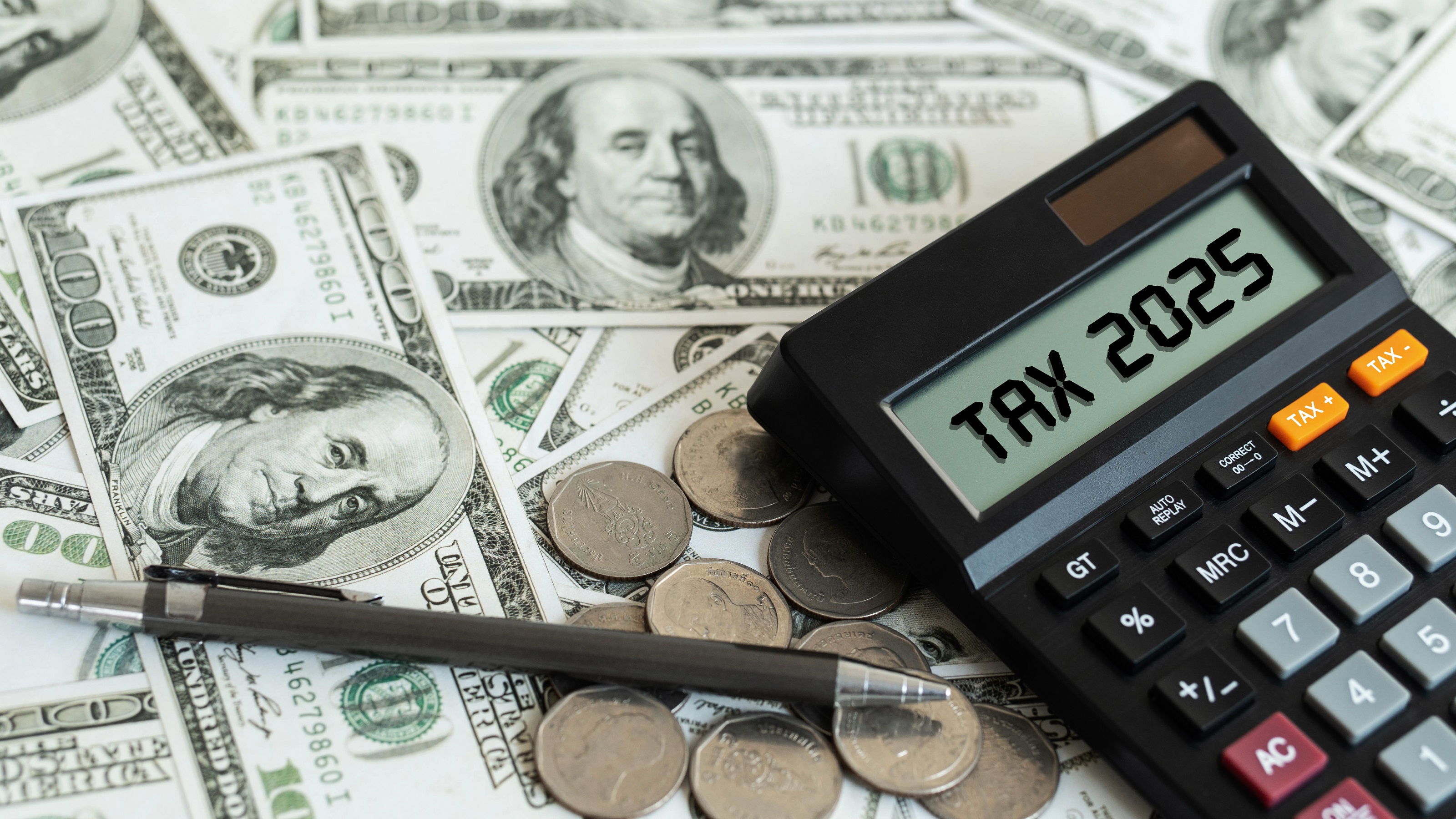Lower Taxes on Required Minimum Distributions
Congress has given retirees more time to take required distributions from their retirement accounts. But postponing withdrawals could cost you a lot of money.


There’s a reason college students pull all-nighters and millions of older adults wait until April 14 to file their taxes. When confronted with a task that’s necessary but joyless, it’s human nature to put it off until the last minute.
For some retirees, taking withdrawals from their retirement savings accounts is another chore that falls to the bottom of their to-do list. Investments in traditional IRAs and 401(k) plans grow tax-deferred, but you must pay taxes when you take the money out. In addition, tapping a nest egg you’ve diligently nurtured for decades elicits fears that you’ll run out of money in your later years.
If you’re reluctant to take money out of your retirement savings, you may be gratified to learn that you have more time to procrastinate. SECURE Act 2.0, which was signed into law late last year, increased the starting age for taking required minimum distributions from traditional IRAs, 401(k)s, and other tax-deferred plans to 73, from 72. In 2033, the starting age for RMDs will increase to 75. The change means that individuals who turn 72 this year will be able to postpone taking their RMDs for another year (technically until April 1, 2025, which we’ll discuss later).

Sign up for Kiplinger’s Free E-Newsletters
Profit and prosper with the best of expert advice on investing, taxes, retirement, personal finance and more - straight to your e-mail.
Profit and prosper with the best of expert advice - straight to your e-mail.
The delay in the deadline for taking RMDs will benefit seniors who got a late start on saving and need more time for their investments to grow. It will also benefit seniors who are still working in their early seventies, because they may be able to delay distributions until they retire and fall into a lower tax bracket. Almost four in 10 workers (39%) expect to retire at age 70 or older or do not plan to retire, according to the Transamerica Center for Retirement Studies.
A Costly Delay
The RMD deadline is irrelevant to millions of retirees who need funds from their IRAs to pay their expenses in retirement. But if you’ve been putting off taking distributions from your IRA because you have other sources of income, postponing your day of reckoning with the IRS could prove costly, financial planners say.
Your required minimum distributions are calculated each year based on the amount of money in all of your tax-deferred accounts at the end of the year and your life expectancy as determined by the IRS’s Uniform Lifetime Table. When you delay distributions, you shrink
the window during which the money must be withdrawn. For example, when you take distributions at age 75, your RMD will be based on the expectation that you’ll take withdrawals for an additional 24.6 years. If you live to age 90, your RMD will be based on 12.2 years.
As a result, when you eventually start taking distributions, “your RMD is likely to be bigger every year for the remainder of your retirement,” says David McClellan, a partner with Forum Financial Management in Lombard, Ill. Depending on the size of your RMD, the withdrawal could push you into a higher tax bracket and trigger other distressing consequences.
The problem could be exacerbated for married couples if one spouse dies prematurely. The surviving spouse will still be required to take RMDs if that spouse is 73 or older, but at a potentially higher tax rate because the spouse’s filing status will have changed from married filing jointly to single, says Brian Schmehil, a certified financial planner with the Mather Group in Chicago.
In addition to shifting you into a higher tax bracket, a large taxable withdrawal could increase your premiums for Medicare Part B, which covers doctor’s visits and outpatient care. High-income Medicare beneficiaries must pay a Part B surcharge, known as the income-related monthly adjustment amount (IRMAA), which is based on your modified adjusted gross income from two years ago. The IRMAA is a “cliff” surcharge, which means that if your MAGI exceeds the threshold by as little as a dollar, you will have to pay higher premiums. In 2023, the standard Medicare Part B premium is $164.90, but seniors who are subject to the surcharge will pay monthly premiums ranging from $230.80 to $560.50, depending on their 2021 MAGI.
Medicare surcharges, along with tax rates, could rise in the future. President Biden has proposed increasing tax rates on individuals who earn more than $400,000 to extend the solvency of the Medicare trust fund by 25 years. While that proposal is unlikely to go anywhere in a divided Congress, lawmakers will eventually need to figure out a way to shore up Medicare and Social Security, which face mounting financial pressures as millions of baby boomers retire. Medicare’s hospital insurance fund faces insolvency as early as 2031, and Social Security will be forced to cut benefits by as much as 23% by 2034 unless Congress acts to increase its reserves. Biden’s plan is “pointing to an inevitability that taxes are going to have to rise at some point in order to cover these big issues,” McClellan says.
Downsizing Your Tax-Deferred Accounts
The most effective way to reduce your RMDs is to shrink the amount of money in your tax-deferred accounts before you’re required to take them, says Craig Toberman, a CFP in St. Louis. Converting some of the funds in your traditional IRAs to a Roth is one way to accomplish this goal, and the delayed deadline for RMDs gives you more time to convert.
When you convert money in a traditional IRA to a Roth, you must pay taxes on the amount you convert (although part of the conversion won’t be taxed if you’ve made nondeductible contributions to your IRA). But after the conversion, all withdrawals are tax-free, as long as you’re 59½ or older and have owned a Roth for at least five years. Unlike traditional IRAs and other tax-deferred accounts, Roths aren’t subject to required minimum distributions, so if you don’t need the money, you can let it continue to grow, with no obligation to the IRS. “The beauty of a Roth conversion is that it gets the money into a wrapper that will grow tax-free forever,” Toberman says. “Even if tax rates double in the future, it has no impact on a Roth because two times zero is zero.”
Converting to a Roth can also shield you from the Medicare surcharge because withdrawals won’t increase your modified adjusted gross income. However, timing is everything. As mentioned earlier, the surcharge is based on your tax return from two years ago, so a large Roth conversion at age 64, for example, could boost your Medicare premiums when you’re 66. One workaround is to convert when you’re 62, which will avoid the two-year look-back that begins once you turn 65 and sign up for Medicare. But even if you’re older than 62, the upside to a conversion is that future premiums won’t be affected by withdrawals from your Roth. Although a conversion could hike your premiums for one year, it could still pay off in the long term.
Ideally with the help of a financial planner, you can calculate how much you can convert each year without moving into a higher tax bracket and/or triggering the Medicare surcharge. The delay in RMDs gives you more time to spread out your conversions and smooth out the tax bill—which is particularly helpful for seniors who continue working into their late sixties, McClellan says. Those seniors may still have a few low-income years after they stop working to convert to a Roth before they’re required to take RMDs, he says. That’s important, because once you start taking RMDs, you can’t convert money in a traditional IRA (or another tax-deferred account) to a Roth until you’ve taken your required distribution for the year, which could result in a hefty tax bill.
Before 2018, taxpayers who converted an IRA to a Roth had until the tax-extension deadline—typically October 15—of the year following the year they converted to change their minds. The Tax Cuts and Jobs Act eliminated this option, so you need to be prepared to pay taxes on the entire conversion, ideally from sources outside of your IRA.
If you don’t have funds outside of your IRA to pay taxes on a Roth conversion, another way to shrink the size of your IRAs is to take modest distributions from your accounts before you’re required to take RMDs. As long as you’re 59½ or older, you won’t pay a 10% penalty on the distributions. You’ll owe taxes on the withdrawals, but if you’re no longer working, you’ll probably pay the taxes at a lower rate. An additional benefit is that you’ll be able to use that income to delay filing for Social Security, ideally until age 70, so you can take advantage of delayed-retirement credits.
Strategies for Older Retirees
Once you start taking RMDs, you have fewer options to lower your tax bill, which is why planning ahead is important. While SECURE Act 2.0 reduced the penalty for failing to take an RMD from 50% of the amount you should have withdrawn to 25% (10% if you take the necessary RMD by the end of the second year following the year the RMD was due), that’s still a hefty slice of your savings.
In the first year you’re required to take an RMD, you have the option of postponing your first distribution until April 1 of the following year. For example, if you turn 73 this year, you can postpone your first distribution until April 1, 2024. (For all years following the first year, your deadline is December 31.) However, when you postpone your first RMD until April 1, you’ll end up having to take two RMDs in one year, which could double your tax bill.
A tax break for charity. You can support your favorite charities and lower taxes on your RMDs through what’s known as a qualified charitable distribution. You can make a QCD as early as age 70½, but once you’re required to take distributions, the QCD will count toward your RMD. Although a QCD isn’t deductible, it will reduce your adjusted gross income, which besides lowering your federal and state tax bill can also lower taxes on your Social Security benefits and shield you from paying higher Medicare premiums.
In order to take advantage of this tax break, your charitable gifts must be made directly from your IRA to the charity. In addition, you can’t make a QCD to a donor-advised fund or private foundation, and the recipient must be a 501(c)(3) charity registered with the IRS.
The maximum you can donate through a QCD is capped at $100,000 a year. Starting in 2024, that amount will be indexed to inflation, so look for higher thresholds in the future. But even if you donate less than that, you can use this tool to lower your tax bill. Jan Valecka, a CFP in Dallas, encourages clients who have traditionally made annual donations to their church or other organizations to make those contributions from their IRAs.
The key is to make sure your contribution goes directly from your IRA to charity—if you take a withdrawal and then write a check, it won’t count as a QCD. Keep good records so you or your tax preparer can report QCDs on your tax return.
A deferred income annuity. The formula the IRS uses to calculate RMDs (see the box on page 55) assumes you’ll live for a long time, so if your withdrawals are limited to RMDs, there’s a good chance you won’t outlive your savings. The wild card is long-term-care costs. Even a large nest egg can be depleted by several years in a nursing home.
A qualified longevity annuity contract (QLAC) provides a source of guaranteed income and will also defer taxes on your RMDs. QLACs allow seniors to use funds in their IRAs or 401(k) plans to purchase a deferred income annuity that provides guaranteed payments on or before age 85. Some seniors use these products to cover their long-term-care expenses, which tend to increase significantly late in life.
The portion of savings used for the annuity is excluded from the calculation to determine your RMDs. For example, if you have $500,000 in an IRA and transfer $100,000 into a QLAC, your RMD is based only on the remaining $400,000. The taxable portion of the money you invested will be taxed when you start receiving income from the annuity. SECURE Act 2.0 increased the maximum you can invest in a QLAC to $200,000, from $125,000. The law also eliminated a provision that limited QLAC investments to 25% of your plan balance.
How to Take Distributions
Many seniors who don’t need funds from their IRAs to pay expenses wait until year-end to take the money out. In a rising market, that gives your investments more time to grow. But in a declining market, that strategy could force you to sell securities at a loss to satisfy your RMD. In response to the 2008–09 financial meltdown and in 2020 due to the pandemic, Congress suspended RMDs for a year, but you can’t count on that happening again.
Ideally, you should keep enough money in safe, low-risk investments, such as a money market funds, to cover your RMD. But if for some reason you don’t have sufficient funds in liquid accounts to fulfill your obligation, you may want to consider making what’s known as an in-kind distribution. With an in-kind distribution, you arrange to have stock or mutual fund shares transferred from your IRA to a taxable account so you won’t have to sell your investments.
The IRS will tax the value of the shares as income, so make sure that value is equivalent to your RMD. The in-kind distribution is valued at the price of the shares at the market close on the day of the transfer. This maneuver won’t lower taxes on your RMD, but it will allow you to avoid selling investments at a loss. If the market rebounds, your investments will recover, which wouldn’t be the case if you cashed them out to fulfill your RMD.
Get Kiplinger Today newsletter — free
Profit and prosper with the best of Kiplinger's advice on investing, taxes, retirement, personal finance and much more. Delivered daily. Enter your email in the box and click Sign Me Up.

Block joined Kiplinger in June 2012 from USA Today, where she was a reporter and personal finance columnist for more than 15 years. Prior to that, she worked for the Akron Beacon-Journal and Dow Jones Newswires. In 1993, she was a Knight-Bagehot fellow in economics and business journalism at the Columbia University Graduate School of Journalism. She has a BA in communications from Bethany College in Bethany, W.Va.
-
 Sam's Club Plans Aggressive Expansion: Discover Its New Locations
Sam's Club Plans Aggressive Expansion: Discover Its New LocationsSam's Club expansion plans will open up to 15 new stores each year. Learn where they plan to open in 2025.
By Sean Jackson Published
-
 What Is the Buffett Indicator?
What Is the Buffett Indicator?"It is better to be roughly right than precisely wrong," writes Carveth Read in "Logic: Deductive and Inductive." That's the premise of the Buffett Indicator.
By Charles Lewis Sizemore, CFA Published
-
 U.S. Treasury to Eliminate Paper Checks: What It Means for Tax Refunds, Social Security
U.S. Treasury to Eliminate Paper Checks: What It Means for Tax Refunds, Social SecurityTreasury President Trump signed an executive order forcing the federal government to phase out paper check disbursements by the fall.
By Gabriella Cruz-Martínez Published
-
 Tax-Deductible Home Improvements for Retirement in 2025
Tax-Deductible Home Improvements for Retirement in 2025Retirement Taxes Your aging-in-place plan could benefit from the medical expense tax deduction. But watch out for capital gains and property taxes.
By Kate Schubel Published
-
 Downsize in Retirement With 2025 Tax Benefits: Three Key Strategies
Downsize in Retirement With 2025 Tax Benefits: Three Key StrategiesRetirement Taxes Downsizing retirees may benefit from tax savings, lower utility bills, and freed-up income. But could a new presidency impact your home sale?
By Kate Schubel Published
-
 Key 2025 IRS Updates: What You Need to Know
Key 2025 IRS Updates: What You Need to KnowFrom IRA contributions to Social Security COLAs and the standard deduction, several changes are headed our way. Get ready to make the most of them.
By Andrew Rosen, CFP®, CEP Published
-
 Premium Tax Credit: Are You Eligible For This Health Insurance Tax Break?
Premium Tax Credit: Are You Eligible For This Health Insurance Tax Break?Tax Credits The tax credit can help qualifying individuals pay for coverage from the Affordable Care Act’s health insurance marketplace.
By Gabriella Cruz-Martínez Published
-
 457 Plan Contribution Limits for 2025
457 Plan Contribution Limits for 2025Retirement plans There are higher 457 plan contribution limits for state and local government workers in 2025. That's good news for state and local government employees
By Kathryn Pomroy Last updated
-
 Is It Too Late to Do a Roth Conversion if You're Retired?
Is It Too Late to Do a Roth Conversion if You're Retired?The short answer is: Not at all. Roth conversions can be great tax-saving strategies … for the right people. Are you a good candidate?
By Arrin Wray Published
-
 New 2025 Estate Tax Exemption Announced
New 2025 Estate Tax Exemption AnnouncedEstate Tax The IRS just increased the exemption as we enter what could be the final year of TCJA.
By Kate Schubel Last updated